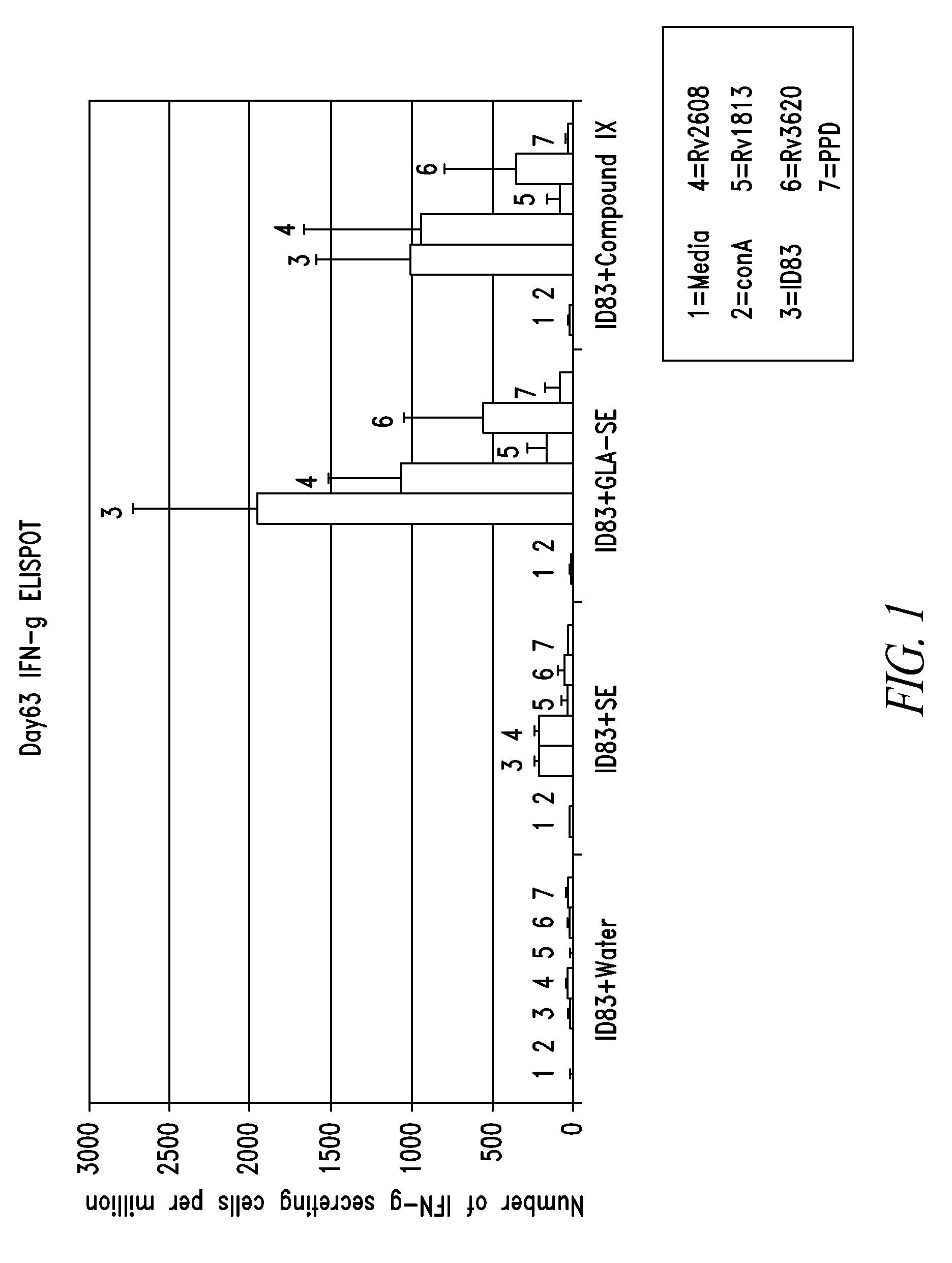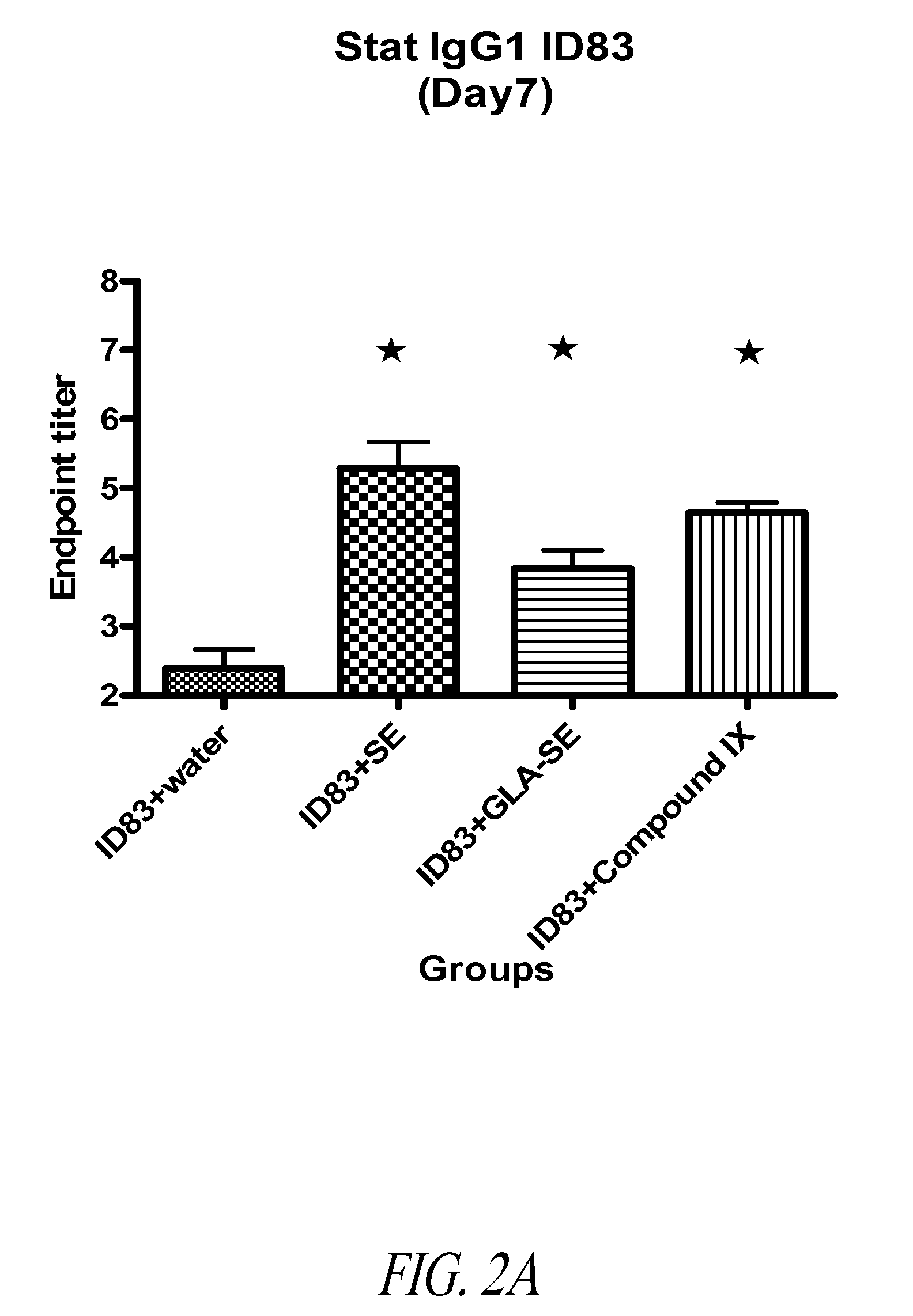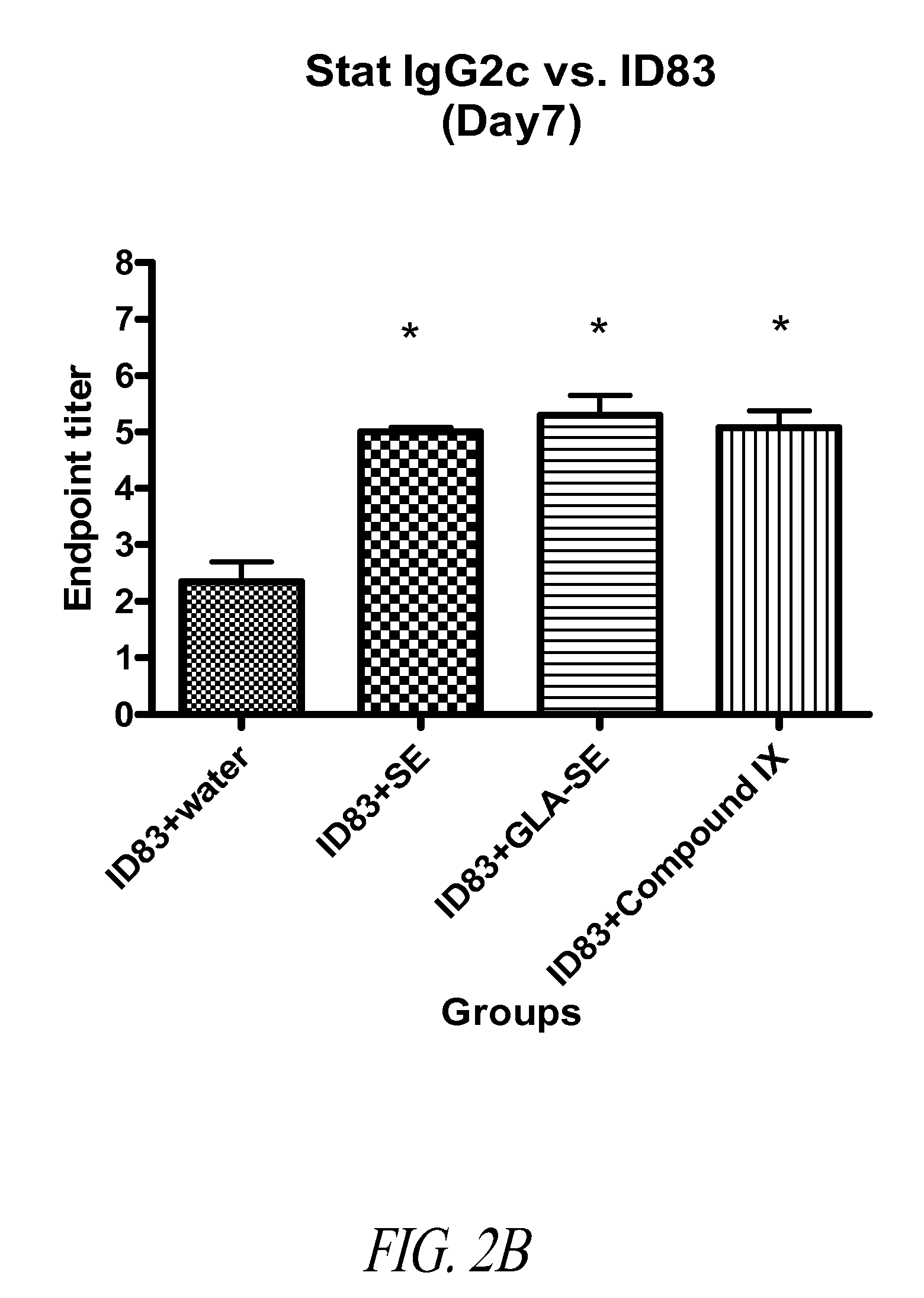Synthetic glucopyranosyl lipid adjuvants
a technology of glucopyranosyl lipid and adjuvant, which is applied in the field of synthetic glucopyranosyl lipid adjuvant, pharmaceutical and vaccine composition, can solve the problems of high production cost, inconsistency from lot to lot, and curtailing the use of adjuvants derived from natural products
- Summary
- Abstract
- Description
- Claims
- Application Information
AI Technical Summary
Benefits of technology
Problems solved by technology
Method used
Image
Examples
example 1
2-AZIDO-2-DEOXY-D-GLUCOPYRANOSIDE (2)
[0160]
[0161]Sodium azide (2.78 g, 42.7 mmol) was dissolved in water (7 mL) and toluene (7 mL). The mixture was cooled to 0° C. under vigorous stirring. Triflic anhydride (4.57 mL, 27.2 mmol) was added dropwise, and the mixture was stirred for 30 min at 0° C. The temperature was raised to 10° C., and the biphasic mixture was stirred for 2 h. A saturated aqueous solution of sodium hydrogencarbonate was added dropwise until gas evolution had ceased. The two phases were separated, and the aqueous layer was extracted with toluene (2×7 mL). The combined organic layers were used in the subsequent diazo transfer reaction.
[0162]Glucose amine 1 (2.04 g, 9.45 mmol), sodium hydrogencarbonate (3.21 g, 38.22 mmol), and copper(II) sulfate pentahydrate (90.5 mg, 0.362 mmol) were dissolved in water (12.3 mL). The triflic azide stock solution prepared above (21 mL) was added, followed by the addition of methanol (81 mL) to yield a homogeneous system. The blue mixt...
example 2
2-AZIDO-2-DEOXY-4,6-O-BENZYLIDENE-D-GLUCOPYRANOSIDE (3)
[0163]
[0164]To a solution of compound 2 (2.00 g, 9.75 mmol) in DMF (40 mL) was added benzaldehyde dimethyl acetal (1.65 g, 10.8 mmol) and camphorsulfonic acid (90 mg). The flask was connected to a vacuum system, and the mixture was heated at 50° C. in an oil bath. After 3 h, the mixture was concentrated using a rotary evaporator. The residue was re-dissolved in diethyl ether (50 mL) and Et3N (2 mL) followed by saturated sodium bicarbonate (50 mL). The aqueous layer was extracted with diethyl ether (3×50 mL). The combined organic extracts were dried over sodium sulfate and filtered. After the removal of solvents using a rotary evaporator, the residue was purified by chromatography on silica gel (120 g RediSep column, eluting with a gradient of 0% through 100% ethyl acetate / hexanes over 50 min, 85 mL / min) to give product 3 (2.58 g, 90%) as a colorless liquid. 1H NMR (300 MHz, CD3OD) δ 7.49-7.32 (m, 5H), 5.58 (s, 1H), 4.64 (d, J=3....
example 3
TERT-BUTYLDIMETHYLSILYL-2-AZIDO-4,6-O-BENZYLIDENE-2-DEOXY-β-D-GLUCOPYRANOSIDE (4)
[0165]
[0166]t-Butyldimethylsilyl chloride (820 mg, 5.44 mmol) was added to a mixture of compound 3 (1.45 g, 4.94 mmol) and imidazole (768 mg, 11.3 mmol) in CH2Cl2 (40 mL) at 0° C. After the solution was stirred overnight, saturated sodium bicarbonate (20 mL) was added, and the mixture was extracted with diethyl ether (3×30 mL). The combined organic layers were dried over Na2SO4, filtered, and concentrated in vacuo. The residue was purified by flash column chromatography (80 g RediSep column, eluting with a gradient of 0% through 70% ethyl acetate / hexanes over 40 min, 60 mL / min) to yield product 4 (1.5 g, 74%) as a colorless solid. 1H NMR (300 MHz, CDCl3) δ 7.46-7.43 (m, 2H), 7.35-7.32 (m, 3H), 5.48 (s, 1H), 4.59 (d, J=7.6 Hz, 1H), 4.23 (dd, J=10.2, 5.0 Hz, 1H), 3.73 (t, J=10.2 Hz, 1H), 3.56-3.51 (m, 2H), 3.31-3.28 (m, 2H), 2.72 (d, J=2.2 Hz, 1H), 0.91 (s, 9H), 0.14 (s, 3H), 0.13 (s, 3H).
PUM
| Property | Measurement | Unit |
|---|---|---|
| diameter | aaaaa | aaaaa |
| diameter | aaaaa | aaaaa |
| diameter | aaaaa | aaaaa |
Abstract
Description
Claims
Application Information
 Login to View More
Login to View More - R&D
- Intellectual Property
- Life Sciences
- Materials
- Tech Scout
- Unparalleled Data Quality
- Higher Quality Content
- 60% Fewer Hallucinations
Browse by: Latest US Patents, China's latest patents, Technical Efficacy Thesaurus, Application Domain, Technology Topic, Popular Technical Reports.
© 2025 PatSnap. All rights reserved.Legal|Privacy policy|Modern Slavery Act Transparency Statement|Sitemap|About US| Contact US: help@patsnap.com



